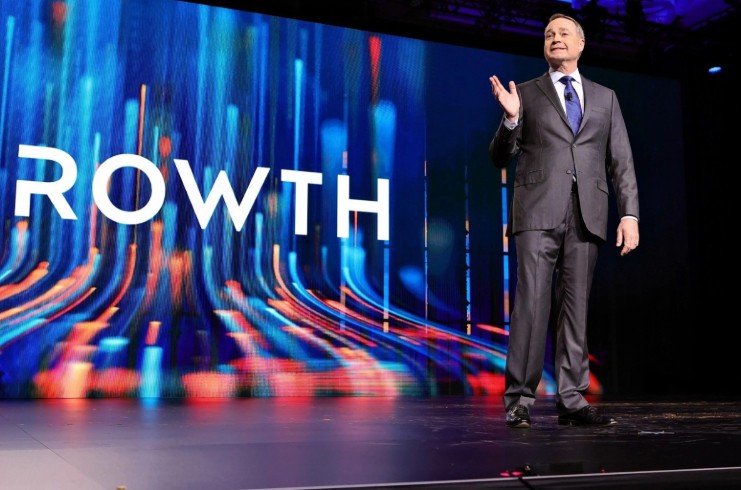Leveraging Generative AI for Document Automation: Beyond Legal and Finance
Document automation has traditionally been the domain of legal and finance teams, but there’s plenty more that can benefit from generative-AI-automated document creation. Customer support, academic research, and more can have enjoy the benefits of large scale document generation, all with the correct industry-specific jargon and conforming to complex layouts need for a huge range […] The post Leveraging Generative AI for Document Automation: Beyond Legal and Finance appeared first on Unite.AI.


Document automation has traditionally been the domain of legal and finance teams, but there’s plenty more that can benefit from generative-AI-automated document creation. Customer support, academic research, and more can have enjoy the benefits of large scale document generation, all with the correct industry-specific jargon and conforming to complex layouts need for a huge range of use cases.
When leveraged properly, AI systems can slash tedious editing, reduce human error, and maintain consistency at scale. From auto-drafted API manuals to AI-curated literature reviews and sentiment-aware support knowledge bases, this technology represents a seismic shift in how your business can approach documentation.
The Untapped Potential of Generative AI Documentation
Document automation is obviously a huge boon to legal and finance teams. But there are plenty of other business roles who could benefit from leveraging generative AI to automate their documentation.
Technical Writers
Traditionally, document automation has faltered when faced with the nuance of industry-specific language. But advances in generative AI mean it’s increasingly becoming fit for purpose to assist technical writers in creating everything from code-laden API docs, to multifaceted troubleshooting guides, or tightly formatted research manuscripts.
Rather than having technical writers routinely spend hours updating product manuals, generative AI can monitor code repositories and auto-refresh manuals in real time, keeping documentation both accurate and current without human intervention.
Customer Support
Customer support teams frequently grapple with sprawling FAQs and troubleshooting flows. A well-maintained AI-powered knowledge base can dynamically surface precise answers, generate new standard operating principles on emerging issues, and even route queries to the right expert. This boost to efficiency allows customer support teams to produce support documentation that’s specific and bespoke to their customers’ needs.
Academic Researchers
Academic researchers face their own demands: drafting grant proposals to stringent guidelines, synthesizing literature reviews, and formatting citations impeccably. Roughly one in six scientists already leverages generative AI to draft grant applications, and 80% of researchers believe human-AI collaboration will be “widespread” by 2030.
Sector-Specific Potentials
The benefits of using generative AI for document automation can be expanded to entire sectors, beyond the legal or finance industries. In healthcare, document automation combined with generative AI can help produce documents like patient information leaflets or compliance reports. In the manufacturing industry, there are things like safety manuals and process guidelines, while the energy sector can be supported by regulatory filings and technical specifications for devices.
This is by no means an exhaustive list. In essence, any industry that regularly requires documentation based on unstructured data conforming to industry standards can benefit from leveraging Generative AI for document automation.
Smashing Blockers: Generative AI Can Now Handle Technical Language
Generative AI’s reputation for hallucination and the specificity of technical language meant that there has been resistance to its use for document automation. But hallucination has declined massively in many of the latest models, and the expanded data sets available to generative AI mean they are becoming much more capable.
Foundation models can absorb everything from regulatory texts to code examples. Their advanced logic capabilities then build a contextual understanding that outstrips rule-based systems that were the past principles of document automation. This understanding can then be fine-tuned on domain-specific information to provide insights on specialized terminology and writing styles. Newer AI models can switch easily between legalese, technical prose, academic formats, and even other languages when it comes to document automation.
Another previous blocker to effective document automation was that even if AI could produce the text or copy, users would often have to spend considerable time reformatting it to fit guidelines, regulations, or even just make it legible for users. However, there’s an increasing prevalence of ‘layout-aware’ models that can understand spatial structure to produce things like tables, figures, code blocks, and more.
Streamlining Editing and Document Creation to Reduce Tedious Manual Work
Even if your documentation creation can’t be fully automated, Generative AI can be a huge boost by drafting sections, refining language for clarity, and reorganizing documents for coherence far faster than humans can do at scale. AI can cut human editing time massively, letting experts focus on strategic content rather than line edits.
Research teams can likewise harness AI to summarize huge datasets into concise findings or auto-generate structured reports based on the raw data you input. This is particularly useful for analyzing large amounts of quantitative data. Large-scale sentiment analysis can spot patterns and recurring themes much more efficiently than a human poring over large amounts of qualitative responses.
AI also makes it simpler for teams to edit certain formats of documentation much more easily. Whether it's live updates on auto-refreshed webpages or manipulating PDFs, AI can cut down on the time and personnel needed to edit previously tricky-to-amend document formats.
Dynamic templating furthers this by structuring documents to specifications. The right prompt can create documents to your required specifications, like user manuals tailored to device variants, or a grant proposal aligned with specific funding guidelines.
Minimizing Human Error by Ensuring Accuracy and Consistency in Specialized Documentation
Manual data entry and extraction are fertile ground for mistakes, especially within technical specifications and research data. Generative AI can dramatically reduce these errors by standardizing data capture and validation processes. It can recognize key parameters in test reports or configuration specs with near-perfect recall.
AI can treat data integration as a structured pipeline, which enforces consistency across large document sets, making sure the terminology, formatting, and data labeling are uniform and correct. This kind of standardization can then form the basis for creating documentation like safety manuals or research records, whether the creation is automated or done by humans. The structured data makes it much easier in both cases to find the relevant data needed to create technical documents.
The decline of hallucination rates in generative AI systems means they can even be used for fact-checking in both datasets and documentation. Advanced AI systems can cross-validate data against original sources or external knowledge bases, flagging anomalies that human reviewers might miss.
Beyond Legal and Finance Documentation: Generative AI in Action
Generative AI is already driving tangible productivity gains when it comes to document automation across development, research, healthcare, manufacturing, and project management.
Software Development
CortexClick launched a content-generation platform built on large language models to automate the creation of software documentation, tutorials, and technical blog posts, complete with screenshots and code snippets. Early customers report that the AI could draft API references and user guides in minutes instead of days, freeing technical writers to focus on architecture and edge-case review.
Research
A recent development for academic researchers tackling information overload is Elsevier’s ScienceDirect AI, which launched on March 12, 2025. It claims to cut literature‐survey time by up to 50 percent by instantly extracting, summarizing, and comparing insights across 22 million peer-reviewed articles and book chapters.
Heathcare
In healthcare, Sporo Health’s AI Scribe, a specialized agentic architecture trained on anonymized clinical transcripts, can outperform leading large language models in terms of recall and precision when generating SOAP (Subjective, Objective, Assessment, and Plan) summaries, significantly reducing the time clinicians spend on documentation.
Manufacturing
On the factory floor, Siemens’ Industrial Copilot is helping Schaeffler AG’s automation engineers produce PLC code (Programmable Logic Controller, the special coding language used to control factory automation) via natural-language prompts. This has slashed manual coding effort time and error rates by automating routine scripting tasks and freeing engineers for higher-value work.
Project Management
Even project managers benefit: C3IT’s Copilot PM Assist, built on Microsoft 365 Copilot, enables teams to draft complex project documentation 30 percent faster and cut kickoff-presentation prep time by 60 percent.
Implementation Considerations
If you want to enjoy similar benefits, start by mapping out your documentation workflows to identify the high-impact processes where AI can replace manual effort. At the same time, assemble clean, representative training data that reflects your domain’s terminology and formatting requirements.
While hallucinations have decreased, and AI’s ability to interpret technical contexts has improved, human oversight is still important. AI outputs should be audited, biases identified, and hallucinations caught before publication. A hybrid workflow consisting of an AI draft followed by expert review, often delivers optimal results.
As these systems evolve, we can anticipate even more sophisticated document agents that proactively monitor changes, conduct version control, and auto-deploy updates across distributed teams. The landscape of intelligent document processing is just warming up. Advances in multimodal understanding, on-the-fly model fine-tuning, and agent orchestration promise greater precision and autonomy in documentation generation.
Conclusion
Generative AI has great potential for documentation automation across all sectors. Technical writers gain dynamic assistants that keep manuals up to date, support teams unlock truly self-serving knowledge bases, and researchers draft and format manuscripts with unprecedented speed and precision. Your business could achieve dramatic gains in efficiency, accuracy, and consistency. As human oversight guides AI toward safe, reliable outputs, the promise of end-to-end document automation becomes a reality.
The post Leveraging Generative AI for Document Automation: Beyond Legal and Finance appeared first on Unite.AI.









































































